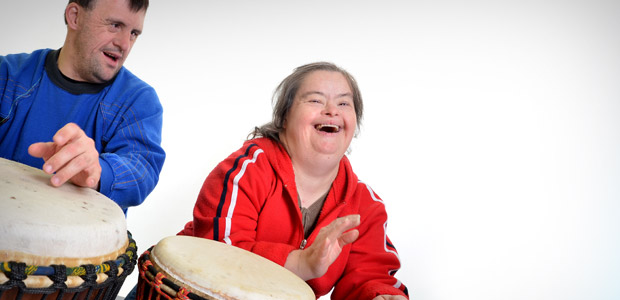A large amount of our musical equipment has a sensory nature and so will be stimulating not only to the ear but also to the touch. As with many musical instruments, the aspect of hearing is just one of the ways in which the individual can experience and explore the instrument.
We can experience music in the following ways:
Through hearing
The most common way to experience music is to listen to it. This can be through headphones, concerts, on TV and radio, but what happens if you have a hearing impairment or are profoundly deaf, how can music then be experienced?
Through Vibrations
All instruments will vibrate to some degree, some instruments rely on the vibration to function. Reed instruments for instance, such as Clarinet, Saxophone or Oboe will rely on a reed/s which vibrate when blown. The keys on a piano will trigger hammers which in turn hit wires which vibrate with sound.
We can experience this vibration ourselves, the vibrations on a piano will travel and so a pianist will be able to physically feel the ‘sound’ as well as hear it. Some therapy methods such as Tibetan Bowls will release a vibration and a resonance when placed on the body and brushed gently. Some bowls are designed to be used for group work and are placed in the room rather than directly onto the body. The vibration will then resonate with our body’s own natural vibration/resonance.
Through the Sinuses
We may be more familiar with the sinuses in our face which can get blocked when we have a cold. Sinuses are air cavities in the bones, most commonly the cranial bones. When blocked, these will be uncomfortable, however for musical purposes, the vibration of the music or instrument can resonate within these sinuses. This allows us to physically feel the music as well as hear it.
When you sing, try different pitches, tones and volumes and then try to feel where they resonate. This may be in your chest, your face or in your head. You may find that lower notes and tones resonate more in the chest and lower down on your face. Higher pitches may resonate in your forehead or in your skull. Also note where these resonate when you are talking, if you are speaking quietly or in a normal volume you may not notice any resonance at all. However, if you shout or raise your voice to be heard, then you may feel the resonance.
Through these non-auditory methods, you can experience music regardless of if you are the musician or the audience.
Here at I.T.S, our musical equipment may also be in fun shapes, designs and bright colours and so they are appealing to the eye and may also be incorporated into play.
Some children may wish to use drums or symbols to indicate specific times of their session, e.g. the beginning or the end. Some individuals may use the instruments as part of their dramatic enactment either as music or as a sound for a character or theme.
We use predominantly portable percussive instruments which do not neccessarily require musical training to use. This can include the Xylophone, Rain Drum, Symbols, Shark Drum and castanets. Much of our musical equipment is sensory based and will be colourful SK1 safe plastics or ‘Rainforest’ instruments.
Musical instruments have been used by our therapists in sessions to build rapport and relationships with individuals with learning disability/difficulties, brain injuries, Cerebral Palsy, Global Developmental Delay and Autism.
If you would like to hear more about how music can be used therapeutically, then please do get in touch.
Get in touch to work with us









